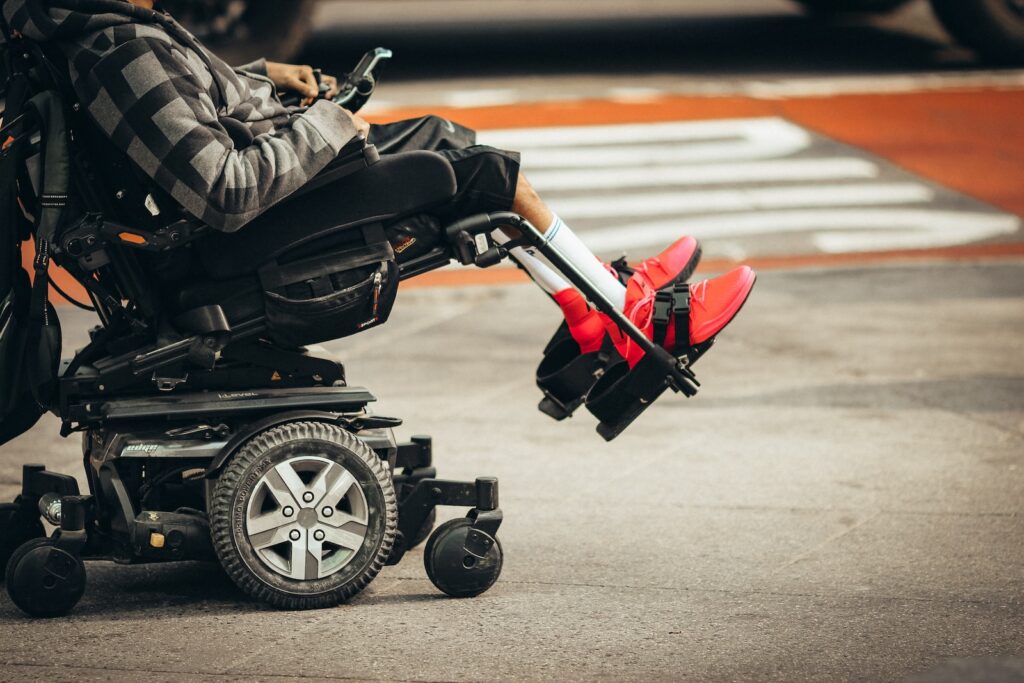41% of disabled people find UK streets inaccessible
Inaccessible street routes have left 41% of disabled people in the UK unable to reach their destination, according to a new Sustrans report.
The UK’s largest walking, wheeling and cycling charity has highlighted how disabled people are experiencing barriers in their daily lives due to inadequate infrastructure.
This is even more pronounced for those with mobility impairments or learning disabilities, as 55% found streets inaccessible, leading to journeys cut short.
Now Sustrans is calling on local authorities and the government to consider disabled people when making decisions that will affect how they navigate their local areas.

Xavier Brice, CEO of Sustrans, said: ‘Our report clearly demonstrates that understanding the barriers disabled people experience getting around their neighbourhoods is imperative in creating an equitable society.
‘Putting disabled people at the centre of discussions about how we plan and create spaces where we can all move around easily and safely is vital. The UK government must listen and take action to create places planned around people, not cars.’
1,100 disabled people were surveyed as part of the six-month long Disabled Citizens Inquiry, coordinated in partnership with disabled persons organisation Transport for All.
A lack of dropped kerbs, restricted pavement widths, uneven surfaces, steep slopes, and seasonal barriers, such as ice and overgrown vegetation, were all listed as barriers.
However, it’s not just physical pavement issues that are a problem – third of those surveyed said they are afraid of negative comments on their physical or mental health condition from members of the public when out walking or wheeling.
This has all contributed to a ‘transport accessibility gap’, with disabled people making 38% fewer journeys across all modes of transport than non-disabled people.
Sustrans has made a series of recommendations to help resolve these issues which include:
- Prohibiting pavement parking to ensure more accessible streets
- The creation of a long-term find to improve pavements
- Ensuring communities have services and amenities that are easily accessible within walking or wheeling distance
Separate research from roadscape intelligence service Gaist shows that pavement quality in England has declined since 2019, with poorly maintained, low-quality surfaces, inconsistent designs, slippery conditions and inaccessible diversions around roadworks.
Almost four in five disabled people who took part in the Inquiry survey, carried out by Ipsos, said they wanted a national Pavement Fund to improve pavement conditions and to allow them to walk or wheel more easily.
The cost of living crisis is also having a huge impact on how disabled people travel, with 59% reducing their travel overall and 52% agreeing rising costs are affecting essential journeys, such as trips to healthcare services.
As disabled people are less likely to own a car and public transport services are being reduced across the country, Sustrans says more communities should have services within walking or wheeling distance.
This could help 88% of disabled people to walk or wheel more in their local area and could add an estimated £72.4bn per year to the economy, by closing the gap on the ‘transport accessibility gap.’
Caroline Stickland, CEO of Transport for All, said the report was ‘ground-breaking’: ‘Not only does this give the government a uniquely clear and actionable picture of what we as disabled people need to make walking and wheeling more accessible, it provides a blueprint for how our community must be engaged with for every mode of transport going forward.’
Photo by Jon Tyson














